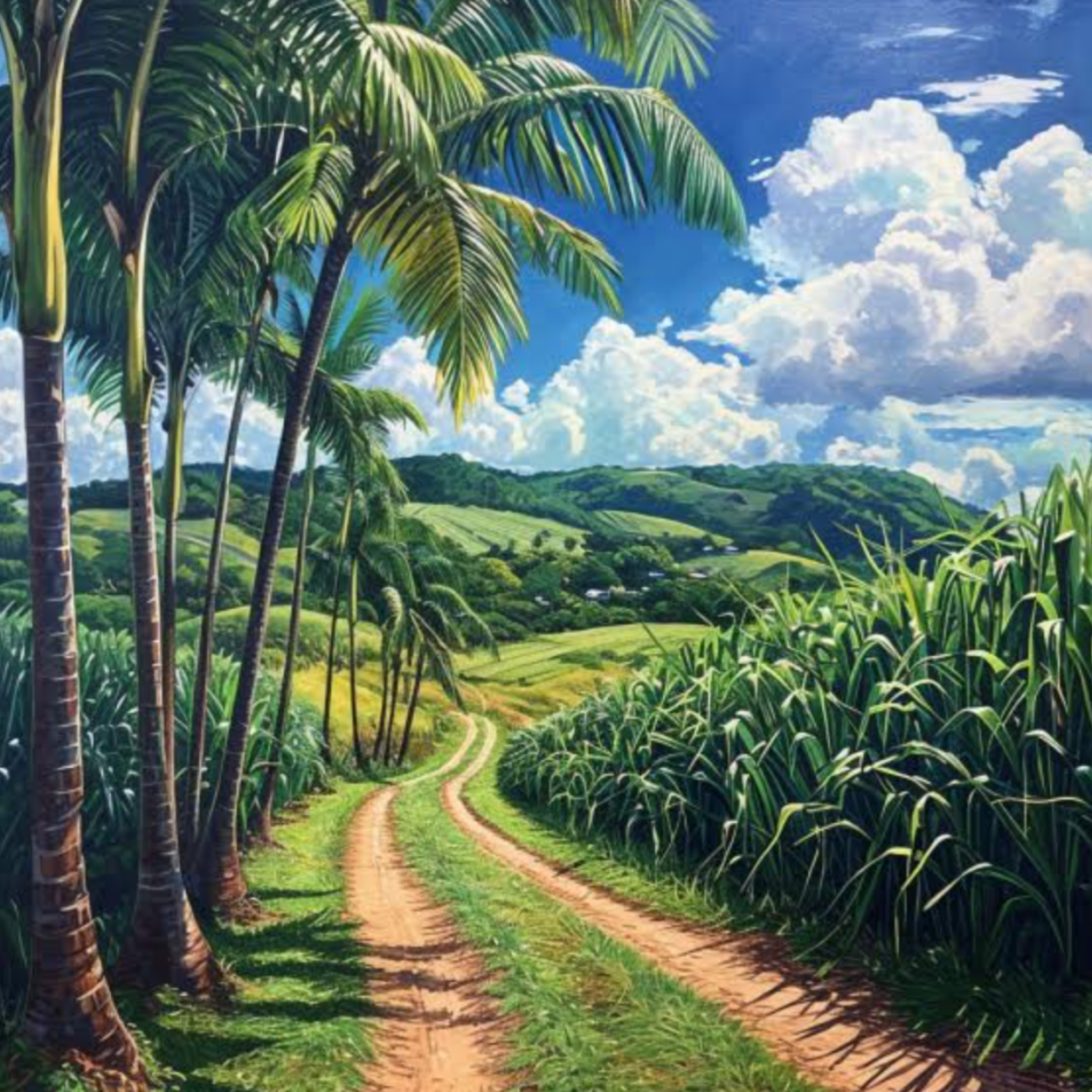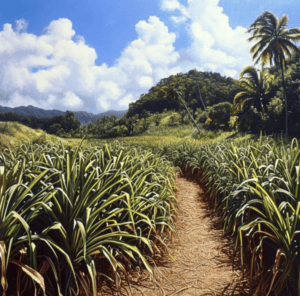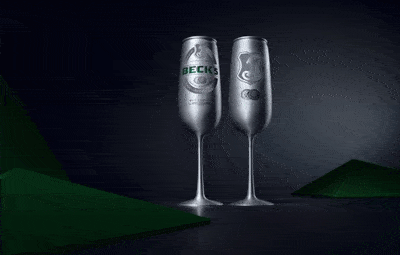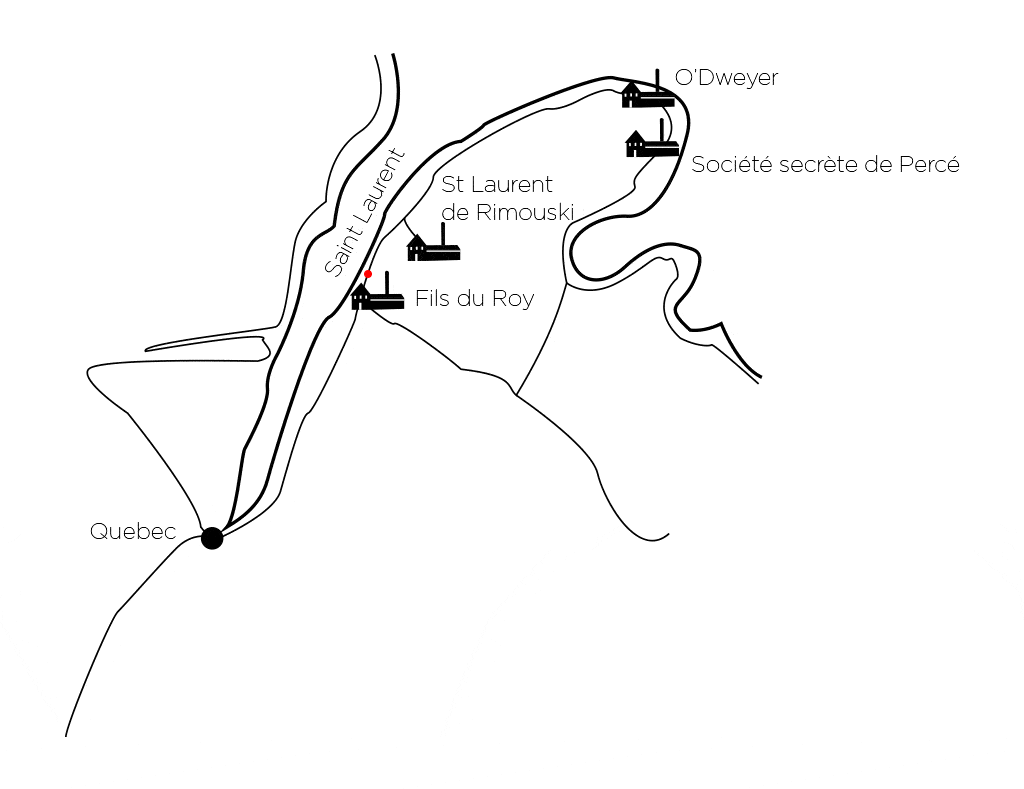
The Irresistible Ascension of Rum
Once plagued by a tarnished reputation as the favored poison of sailors on layovers and the final libation of the condemned, rum has undergone a remarkable transformation. It has evolved into a formidable contender in the realm of premium spirits, standing shoulder to shoulder with whisky, cognac, and armagnac. This resurgence has notably favored agricultural rums hailing from the French Overseas Departments and Regions (DROM), which had previously played second fiddle to molasses-based counterparts.
For an extended period, rum was burdened with a negative association, known as the go-to drink for sailors in port and the last indulgence of those facing their final moments. A far cry from its current status as one of the most esteemed sipping spirits. According to Cyrille Mald, the author of the comprehensive tome “Rhum” (Hachette Vins), the success of rum in its current form is self-evident: “Rum is a multifaceted spirit due to the diverse production processes, history, cultures, and the expertise of the men and women who create it.” The difference is undeniable. Traditional terroirs from former English colonies (Barbados, Jamaica, Trinidad), Spanish territories (Cuba, Puerto Rico), and French regions (the Antilles, Reunion, Guyana) are now joined by newcomers from Asia, Africa, Europe—literally, from all corners of the globe.
The turning point arrives in the early 2000s with the success of Scottish single malts, rekindling interest in brown spirits. Aged rums, dry and notably sweeter, arrive from South America, but not exclusively. This exotic flavor sparks new demand, embraced by brands like the Venezuelan Diplomático or the Philippine Don Papa. Their spirits, crafted from molasses, lighter and more aromatic, revolutionize the taste of rum.
Agricultural rum, primarily produced in the French Caribbean, then faces a downturn. Consumed locally and in mainland France, it seems incapable of resisting the more agreeable and internationally palatable molasses-based rum. Some ominous voices even predict a bleak future. Twenty years later, it’s clear they were grossly mistaken. Agricultural rum not only survived but also renewed itself without renouncing its fundamentals, enshrined in an AOC (Appellation d’Origine Contrôlée) since 1996 for Martinique. A remarkable feat, as noted by Grégoire Gueden, the director of the spirits division at the Bernard Hayot Group (Clément, Rhum J.M): “One of the specificities of agricultural rums is their flavor. At that time, consumers preferred more neutral flavors. We could have altered our spirits to align with the trend, but instead of taking the easy way out, the focus was on aging, which has the property of enhancing aromas.”
Aging alone is not enough Crucial for the quality of brown spirits, aging is not the sole miraculous recipe. “The attachment of Caribbean producers to their terroir and authenticity has become a paramount value for consumers. Ultimately, South Americans challenged us in a way. They also attracted new enthusiasts who, tired of molasses, now turn to agricultural rums,” concludes Grégoire Gueden. Simultaneously, substantial work has been done on innovation in Martinique, Guadeloupe, and La Réunion. A new generation, well-trained, has taken the lead in the cellars, experimenting with aging techniques and finishes in previously unused barrels, such as those from the wine industry.
Bottles that meet high-end criteria Enhanced knowledge of various sugarcane varieties also allows for the creation of unique cuvées (single casks, vintages) that delight terroir enthusiasts. Rhum J.M, Neisson, Trois Rivières, A.1710, Longueteau, Bologne, Isautier present technically advanced (parcellaires) and aesthetically refined cuvées with bottles that meet high-end, even luxury, standards—a category where French agricultural rums now have their rightful place. The next step is to invest in other global markets, as cognac has successfully done, to secure this triumph.”
Spiritourism: 10 Must-Visit Rum Distilleries in Martinique and Guadeloupe
Every year, 800,000 tourists flock to the distilleries in Martinique to uncover the secrets behind the world’s only AOC (Appellation d’Origine Contrôlée) rum.
This thirst for discovery reflects the enthusiasm generated by sugarcane eau-de-vie.
HSE – Martinique
At Habitation Saint-Etienne, rum is distilled in Simon, and aging takes place in Gros-Morne, at the heart of the historical estate. This site, with its garden recognized as remarkable (featuring 180 plant species), stands out with its warehouses showcasing typical Martinique architecture. A must-visit to explore the art of barrel aging, a specialty of the house renowned for its finishes.
Recommended souvenir: Parcel rum #2
Information: rhum-hse.com
Rhum J.M – Martinique
Nestled in a valley surrounded by lush nature, the Macouba estate explains rum production interactively and playfully with interactive kiosks scattered across the distillery site. The highlight of the visit is the warehouses where barrels are stored in a spectacular atmosphere echoing the red color code of the Fonds-Préville distillery. A well-stocked boutique adds to the experience.
Recommended souvenir: Vintage 2013 aged rum
Information: rhum-jm.com
Saint James – Martinique
Sainte-Marie’s distillery has been producing rum since 1765, with its first vintage emerging in the late 19th century. Explore its rich history (and exceptional spirits) at Habitation La Salle and the Rum and Still Museum to learn everything about rum-making techniques.
Recommended souvenir: Cuvée l’Essentiel XO (trilogy of vintages 1998, 2000, and 2003)
Information: rhum-saintjames.com
L’Habitation Clément – Martinique
With a 16-hectare garden housing 300 tropical species, a Foundation dedicated to Caribbean arts, a main house featuring typical Creole architecture, and an old distillery, L’Habitation Clément is a must-visit. As pioneers in Caribbean spiritourism, Rhums Clément also offers sensory workshops, rare vintage tastings, and themed workshops since 2023.
Recommended souvenir: Secret de fût intense (limited edition)
Information: rhum-clement.com
Trois Rivières – Martinique
Located in the south of the island, between Le Diamant and Sainte-Luce, this estate immerses visitors in the old distillery’s rum-making processes with sound and light projections. Artisan boutiques in the estate’s gardens showcase Martinique’s craftsmanship.
Recommended souvenir: Trois Rivières 12-year-old
Information: troisrivieresrhum.com
A1710 – Martinique
Overlooking the Bay of Simon, the youngest of Martinique’s distilleries (2015) quickly gained recognition for its rums distilled in Charentais stills, forfeiting the AOC. The tours offer a step-by-step exploration of the making of these “extraordinary” rums and tastings in the beautifully restored Habitation Simon lounges. Reservations are recommended, and there’s an option to rent a “guest house” with a pool.
Recommended souvenir: La Perle Rare R579 organic white rum
Information: rhum-a1710.com
Depaz – Martinique
Situated at the foot of Mount Pelée in the north of the island, the distillery is set in a five-hectare park with century-old trees. A rare phenomenon in Martinique, the property boasts a colonial-style castle, which can be visited along with the still-functioning distillery powered by a steam engine. A museum, as well as a restaurant offering beautifully crafted local specialties, completes the experience.
Recommended souvenir: Depaz Single Cask 2011
Practical information: depaz.fr
Bologne – Guadeloupe
Specializing in white rum production, this distillery at the southern tip of Basse-Terre is one of the few still cultivating black cane, a variety with low yield but remarkable character. One-hour tours unveil the secrets of the distillery and aging cellars.
Recommended souvenir: Bologne Black Cane Limited Edition
Information: rhumbologne.fr
Reimonenq – Guadeloupe
The Sainte-Rose distillery, located in the northeast of Basse-Terre, has been producing rum since 1916. A pioneer in Guadeloupe’s spiritourism since 1990 with its museum, it now offers two additional galleries—one on butterflies and world insects, and the other on ancient tall ships.
Recommended souvenir: Rhum Vieux 2009 ‘Cuvée Fernand Or’
Information: rhum-reimonenq-musee.com
Longueteau – Guadeloupe
In the hands of the Longueteau family for four generations, the Marquisat de Sainte-Marie estate, situated at the foot of Soufrière, produces exceptional rums strongly influenced by terroir. The house offers various workshops, including an assembly initiation led by master blender François Longueteau. Allow three hours to leave with your own creation.
Recommended souvenir: Longueteau Genesis Vieux Batch 1
Information: rhumlongueteau.fr
News
Stay tuned and discover all the news in the Spirits World for professionals and amateurs, by our Spirits Hunters’ experts.
See all posts in this category. Join the community on Reddit
Join the community on Reddit
Spirits Hunters is a community dedicated to spirits and the world of mixology. Feel free to talk about the world of mixology and bartending here!
Join






